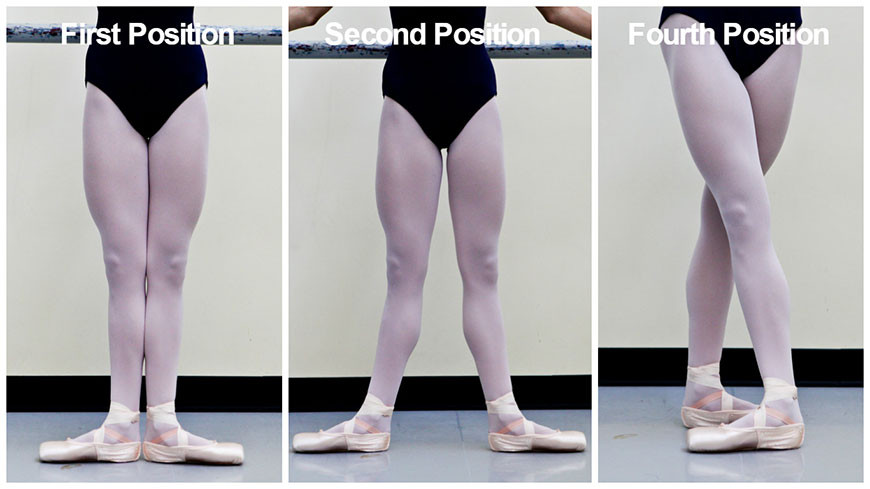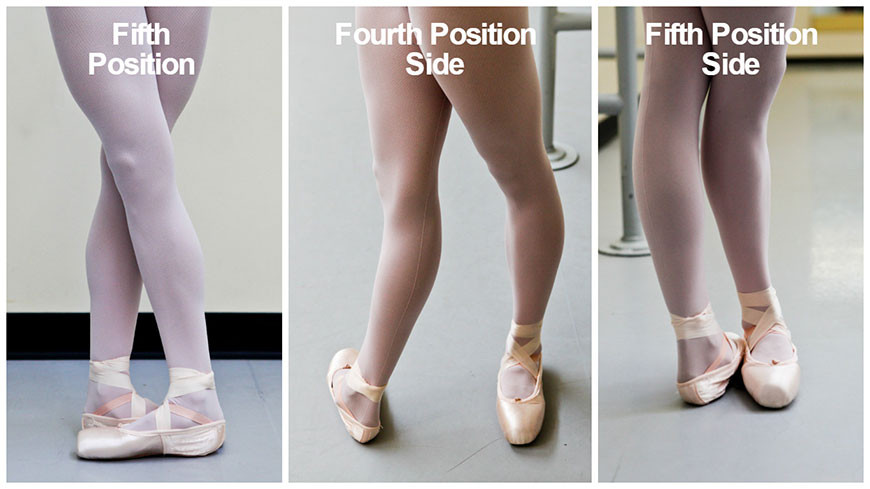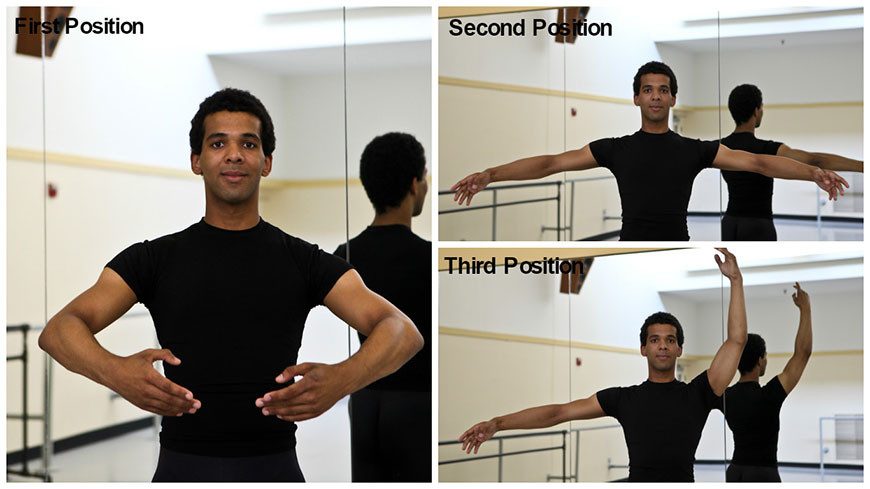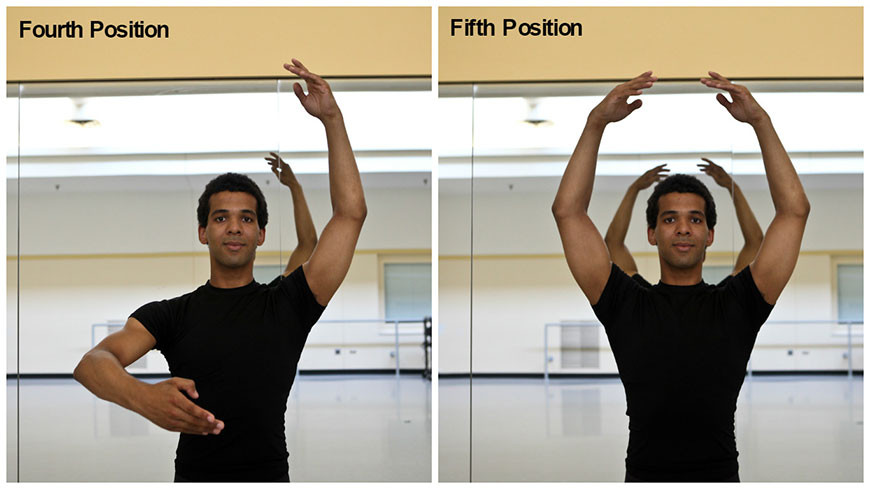Ballet, a captivating art form, is built upon a foundation of specific positions and movements. Understanding these basic Dance Positions is the crucial first step for any aspiring dancer. In ballet, the positions of the feet are fundamental, with five primary positions numbered one through five. A key element in all these positions is “turn-out,” the rotation of the legs from the hip joint, ideally reaching 90 degrees. It’s important to remember that achieving full turn-out is a gradual process that dancers develop over years of dedicated practice. Let’s explore these foundational foot positions and then move on to arm positions and basic movements to get you started on your dance journey.
 Ballet First and Fourth Foot Positions Explained for Beginners
Ballet First and Fourth Foot Positions Explained for Beginners
The first position in ballet starts with your heels touching and your toes pointing outwards, creating a straight line with your feet. Imagine your feet forming a 180-degree angle. Second position builds upon this by positioning your feet shoulder-width apart on the same line, still maintaining the outward turn from your hips.
 Ballet Fifth Foot Position Demonstration
Ballet Fifth Foot Position Demonstration
Fourth position involves placing one foot directly in front of the other, with both feet still turned out. The heel of your front foot should be aligned with the toes of your back foot, maintaining a distance of about a foot apart. Finally, fifth position, often considered more advanced, requires placing one foot directly in front of the other so that the front heel touches the big toe of the back foot, and both feet are fully turned out. You might notice the absence of a third position. In contemporary ballet training, third position is rarely used as it closely resembles fifth position, especially with advanced dancers achieving greater turn-out.
Beyond foot positions, arm positions are equally important in creating the graceful lines of ballet. There are also several fundamental arm positions that complement the footwork and enhance the overall aesthetic of the dance.
 Ballet Arm Positions First, Second and Third Described
Ballet Arm Positions First, Second and Third Described
First position for the arms involves holding them in a circular shape in front of your torso, as if gently encircling a large ball. Second position extends the arms outwards to the sides, slightly curved and at shoulder level, maintaining a soft and graceful line. Third position raises one arm to a rounded position overhead while keeping the other arm in second position to the side.
 Ballet Arm Positions Fourth and Fifth Demonstrated
Ballet Arm Positions Fourth and Fifth Demonstrated
Fourth position for the arms has one arm extended forward in a rounded shape, and the other arm raised overhead in a rounded position. Lastly, fifth position elevates both arms overhead, slightly forward, maintaining a soft, rounded shape that frames the face and completes the upper body posture.
To truly begin dancing, it’s essential to learn some basic dance movements. Three fundamental movements that ballet beginners typically encounter are plié, relevé, and sauté. Let’s break down each of these movements:
- Plié (plee-ay): Meaning “to bend,” plié is a bending movement of the knees. To perform a plié, keep both feet flat on the floor and bend your knees outwards, ensuring they track directly over your toes. This exercise strengthens your legs and improves flexibility.
- Relevé (ruh-leh-vay’): Signifying “to rise,” relevé involves rising onto the balls of your feet. Starting with feet together and knees straight, lift your heels high off the floor, placing your weight on the balls of your feet, not your toes. This can be practiced on one foot or both feet simultaneously to build ankle strength and balance.
- Sauté (soh-tay): Meaning “to jump,” sauté is a basic jump performed from two feet to two feet. Begin in a plié, then use your feet, engaging the same muscles as in a relevé, to propel yourself into the air. Aim to straighten your legs and point your toes mid-air, landing softly back into a plié to cushion your knees.
 Ballet Plie, Releve, and Saute Movements Explained for Beginners
Ballet Plie, Releve, and Saute Movements Explained for Beginners
Now that you have a grasp of basic feet and arm dance positions and fundamental movements, try combining them! Choose a foot position and an arm position. Then, practice pliés, relevés, and sautés while maintaining your chosen arm and foot positions. You’ve officially taken your first steps into the world of dance!
To further enrich your dance journey, explore ballet vocabulary and delve into the fascinating history of ballet. Consider experiencing ballet firsthand by joining classes designed for all ages, including beginner classes for adults. For younger enthusiasts, explore resources like “Dance the Story at Home” to introduce them to the magic of ballet.
